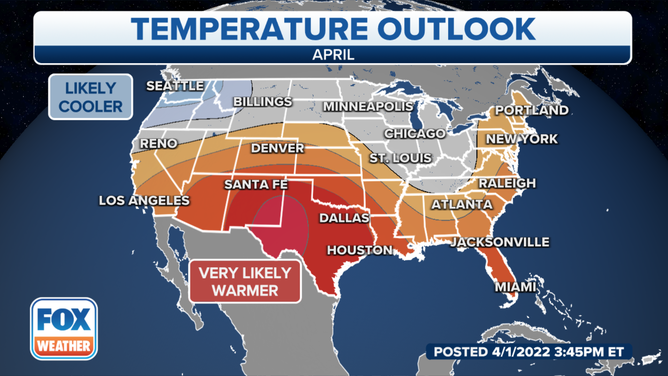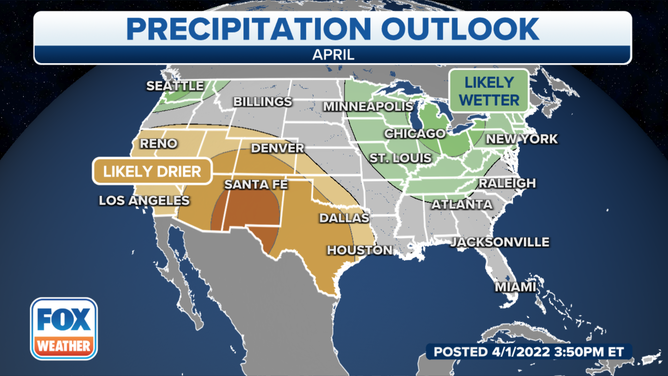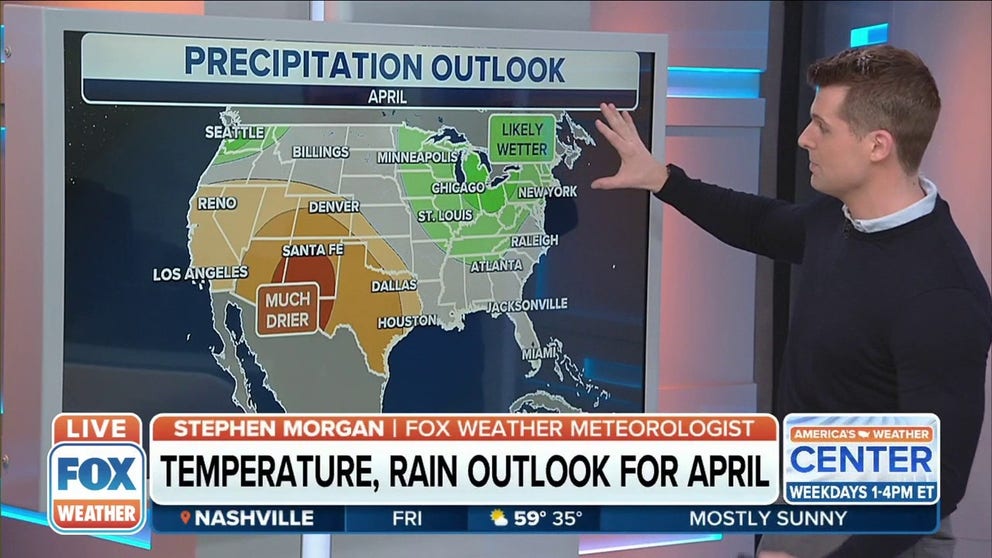April outlook: Warmer, drier weather expected for large parts of country
If you believe weather folklore, April showers bring May flowers
April Outlook: Warm weather to dominate, rainfall to be limited
Temperatures are likely to warm up across most of the U.S. during April. Expect drought conditions to continue in the Southwest.
You may have heard the saying "In like a lion, out like a lamb" in weather folklore, but if new outlooks from the Climate Prediction Center are correct, April could be taking a queue out of what is usually March’s playbook.
The CPC recently released its temperature and precipitation outlooks for April that show much of the country will be in store for drier and warmer weather.
While the weather may not seem to be abiding by expectations right now, forecasters are confident that weather patterns will be more in line with their outlooks by the end of the month.
HOW TO WATCH FOX WEATHER ON TV
Most of country warm except Pacific Northwest
By the time April runs its course, experts expect much of the southern half of the country and the East Coast to have experienced warmer than average temperatures.

Much of the country could see warmer temperatures than average during April.
(FOX Weather)
Troughing over the Eastern U.S. that is in place now is expected to relax toward the middle and the end of the month, which will generally help to decrease rain chances and increase temperatures.
Forecasters say warm weather is also expected to be in control from California into Texas, courtesy of a persistent ridge.
The ridge could even lead to average temperatures being well above average from the desert Southwest into the Lone Star State.
WHAT LA NINA’S CONTINUATION INTO SUMMER COULD MEAN FOR WEATHER
Rainy weather expected in Pacific Northwest, Midwest and Northeast
Forecast models show that storminess will continue through the eastern half nation through the first couple of weeks of April.
These systems will likely lead to many rain gauges seeing above-average precipitation before the region gets a chance to dry out.

Rainy weather is expected to impact Pacific Northwest, Great Lakes and Northeast during April.
(FOX Weather)
Unfortunately, major drought relief from the Plains through the Rockies and into California appears to be non-existent through the end of the month.
The same ridge that will lead to warmer weather will also cause the drier than average month to play out.
The persistent drought in these areas could lead to increased wildfire dangers.
